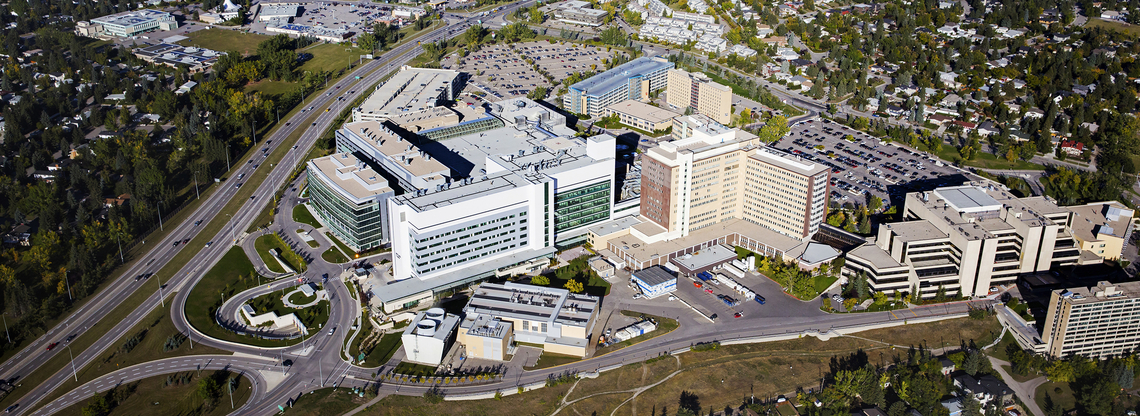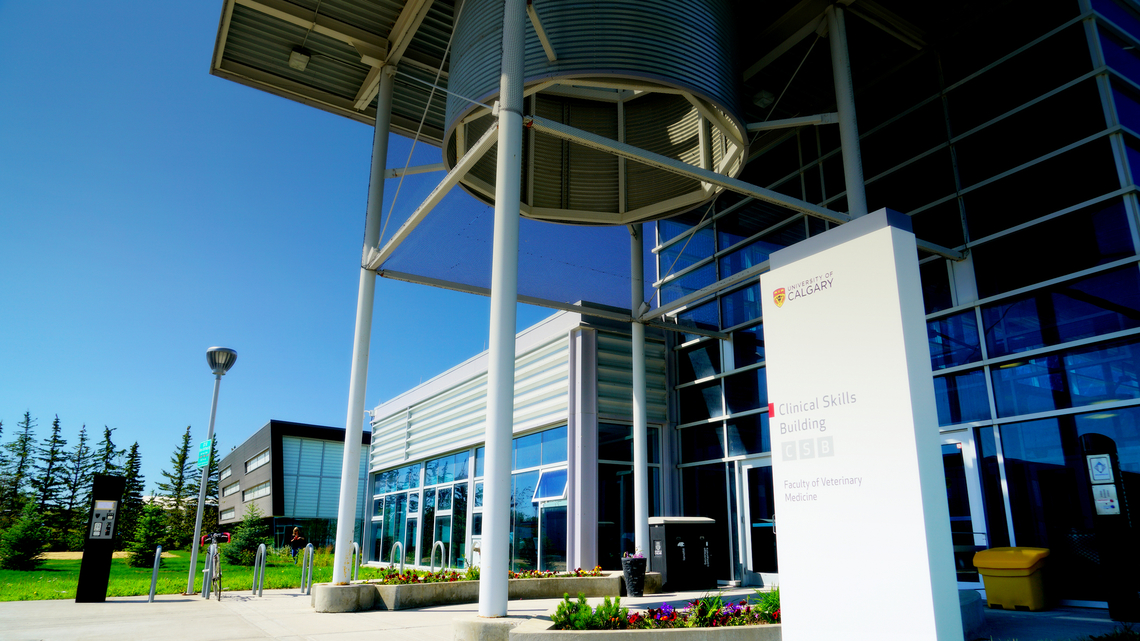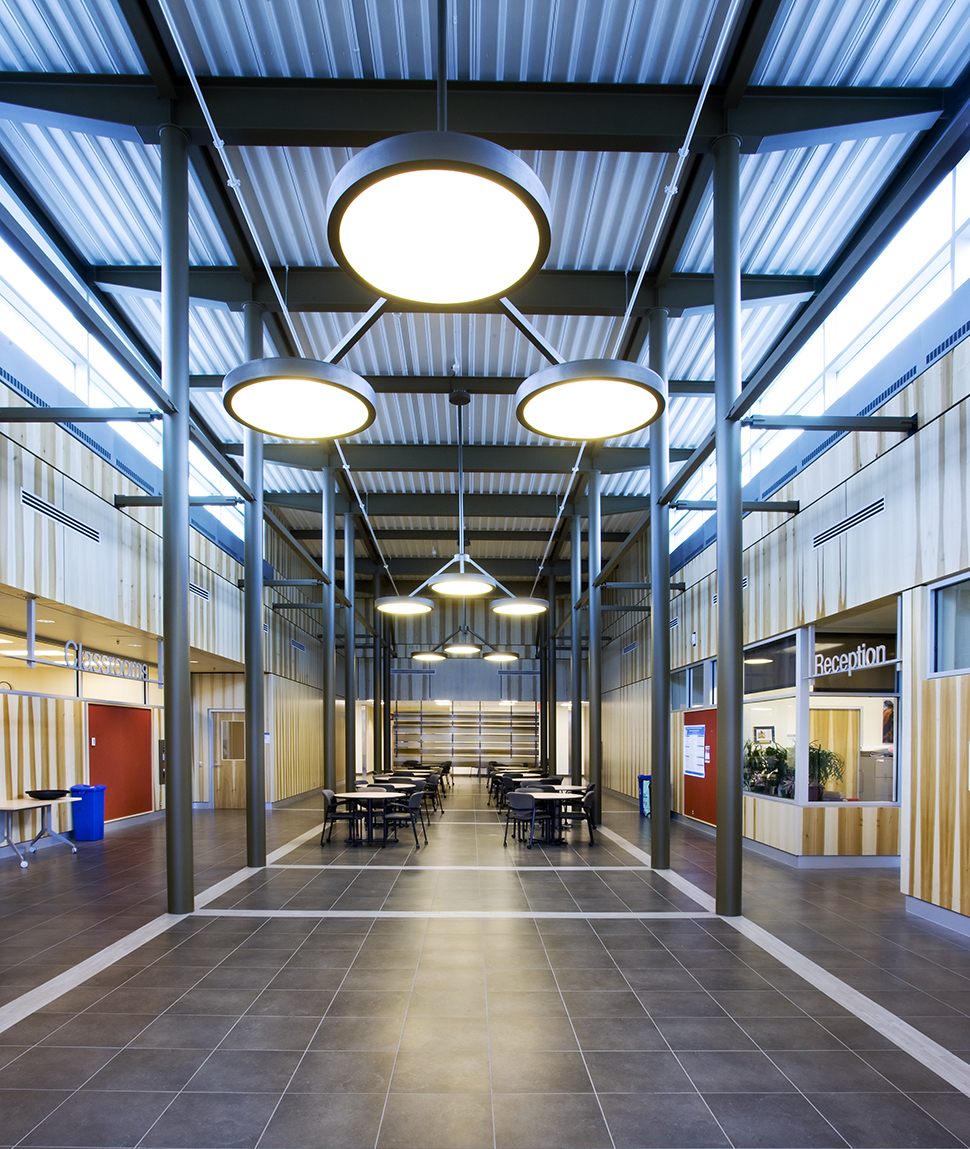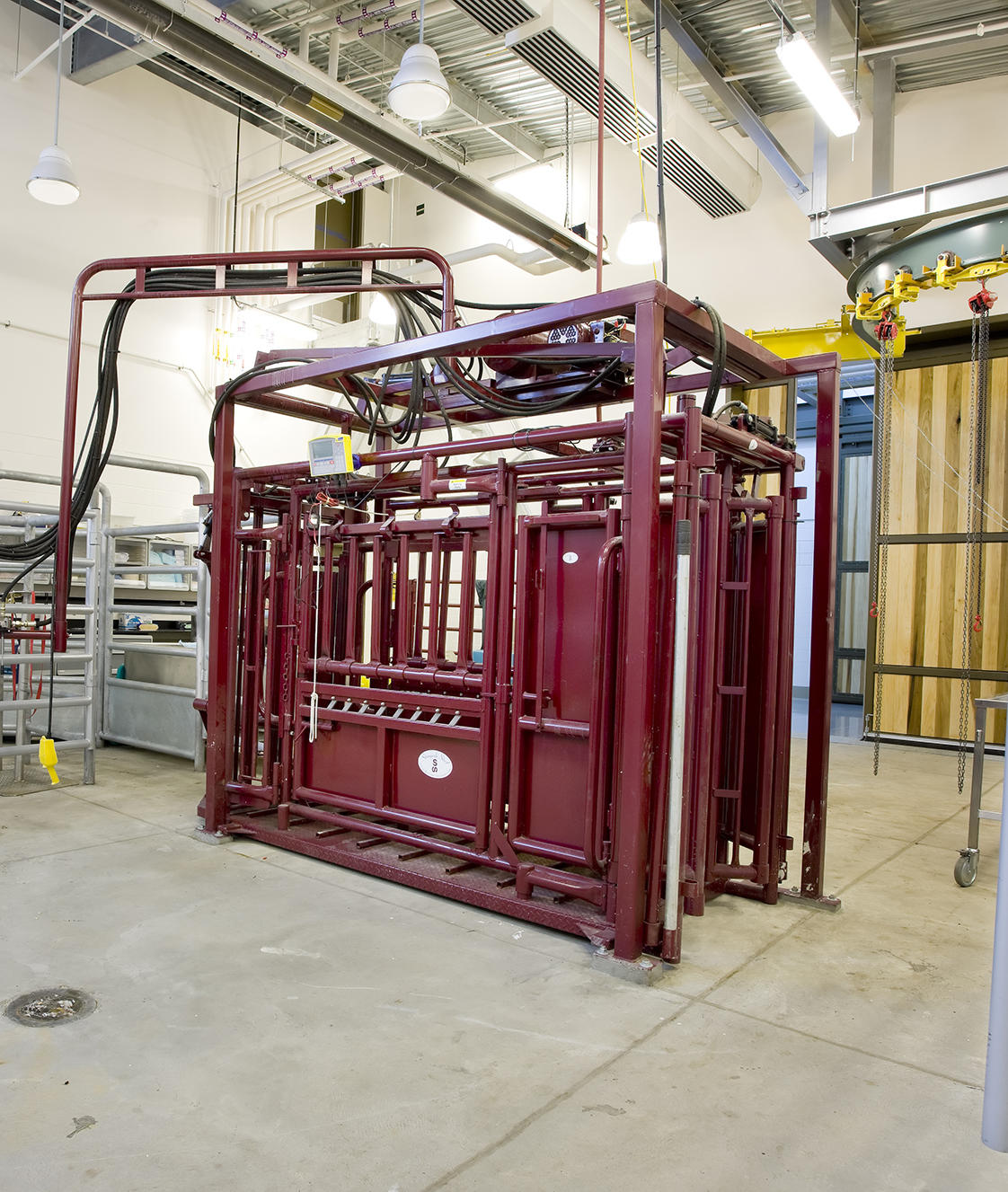Research Facilities
The University of Calgary, Faculty of Veterinary Medicine research facilities are located at two campuses; Foothills and Spy Hill. The 225,000 sq. ft. of teaching and research space across the two sites provides UCVM with a world class research environment and infrastructure.

Foothills Campus
The deliberate integration of UCVM research space with that of the Cumming School of Medicine at the Foothills campus provides a unique environment for comparative medical and One Health research. At the Foothills Campus, in addition to offices, classrooms, the library, and state of the art research laboratories, UCVM has developed a place that creates a sense of identity within the Health Sciences Complex shared with the Faculty of Medicine. The co-location of the Faculty of Veterinary Medicine research labs with the Cumming School of Medicine’s Research Institutes brings animal and human health researchers together fostering collaboration and promoting interdisciplinary research.
The University of Calgary has established research platforms providing many of the essential technologies that support contemporary biomedical research across many domains of activity (genomics, proteomics, cellular and medical imaging, and bioinformatics). UCVM faculty have access to the technology platforms available in the Centre for Advanced Technologies, including the following:
- Biomedical Technical Support Centre (BTSC)
- Central Sanitation and Sterilization (CSS)
- Centre for Genome Engineering
- Experimental Imaging Centre (EIC)
- Flow Cytometry Facility (FCF)
- Health Sciences Animal Resources Centre (HSARC)
- Micro CT Laboratory
- Microscopy and Imaging Facility (MIF)
- Southern Alberta Mass Spectrometry Facility (SAMS)
- University Core DNA Services (UCDNA)
The Western Canadian Microbiome Centre (WCMC) is one of the five grand challenges identified by the Infections, Inflammation, and Chronic Diseases in the Changing Environment (IICD) research strategy at the University of Calgary. The WCMC will provide investigators with the opportunity to test specific variables in an environment that combines scientific expertise, innovative facilities, and industry participation. Features of the facility include expertise in germ-free and gnotobiotic models; in-vivo and in-vitro imaging; human microbiota, as well as innovative technology in areas such as microbial biofilms; genomics, proteomics, and metabolomics analytics, and access to unique environmental systems such as the Alberta oilsands and agriculture and livestock populations.
The Advancing Canadian Wastewater Assets (ACWA) Microbiology Laboratory is used to investigate antimicrobial resistance and transmission, and support enteric pathogen diagnostics and surveillance in wastewaters. This laboratory is shared by researchers from the Faculty of Veterinary Medicine and the Cummings School of Medicine. It is also available to other members of the University of Calgary, the Alberta Provincial Laboratory for Public Health (ProvLab), Calgary Laboratory Services and the Public Health Agency of Canada for ACWA research collaborations. The facilities have the capacity for investigating the full range of pathogens (bacteria, parasites and viruses) found in wastewaters.



Spy Hill Campus
Research activities are also supported at Spy Hill campus which houses the Clinical Skills Building, the Veterinary Sciences Research Station (VSRS), and the Wildlife Research Station (WSRS). This comprises 240 acres of land, housing over 100 cattle, dozens of horses, pig, sheep, and alternative hoofstock. Although primarily dedicated to hands-on teaching for the DVM program, Spy Hill campus is also the site for veterinary clinical research.
The 107,000 sq. ft. CSB has instructional facilities for anatomy, animal handling, medical exercises, clinical skills, professional skills, diagnostic imaging, diagnostic support, and pathology. There are three distinct zones in the CSB: The public zone, which includes administrative space, classrooms, professional skills, teaching/practice rooms, and a learning commons; the lab/service zone, which includes instructional, anatomy, and embalming laboratories, pharmacy, central services, and cold storage; and the animal zone, which includes teaching wings for small animal (with surgical and medical exercise suites, and an imaging suite), bovine, equine, and alternative/general large animal livestock, a clinical skills practice lab, and a pathology/diagnostic facility (including post mortem room).
The Clinical Skills Building also houses the UCVM Diagnostic Services Unit, whereby the faculty offers fee-for-service veterinary diagnostic anatomic pathology and histopathology services to researchers and the veterinary community. The DSU is committed to advancing the education, research, and scholarly programs within UCVM and the broader research community by providing accessible, high quality pathobiology expertise and services.
VSRS is a fully equipped animal housing and research facility for cats, dogs, pigs, sheep, goats, calves, and a variety of exotic species, with support areas for surgery, imaging, laboratory, and diagnostic activities, as well as office space for staff and graduate students. Some teaching animals are housed in the VSRS, and limited teaching takes place within the facility. Large animal research pens were built in 2011, and a 6,240 sq. ft. quarantine barn for infectious disease research was completed in 2012. VSRS Research Guidelines & Fee Guide.
The WRS comprises an indoor handling facility, an outdoor handling facility, and a series of five pens grouped together; it is designed to house wildlife for research and teaching.
